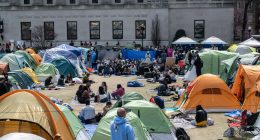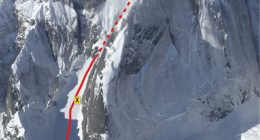
Federal Reserve Chairman Jerome Powell is expected to win a second term leading the central bank but could face a grilling Tuesday at his Senate confirmation hearing, where he is likely to be pressed over how the central bank will tighten policy to combat inflation.
Mr. Powell has been trying to balance two risks over the past year: raising interest rates prematurely and risking a period of prolonged, elevated unemployment, or providing too much stimulus that allows higher inflation to become entrenched, forcing a faster adjustment later.
Fed officials were wary last year of overreacting to one-time price increases by raising rates and cooling down the labor market if supply-chain bottlenecks were a primary driver of inflation and were expected to reverse themselves over time. Over the first half of 2021, they highlighted how the economy was employing millions fewer workers compared with February 2020, just before the pandemic hit the U.S. economy.
But Mr. Powell unveiled a policy pivot in late November, amid signs that the labor market was tightening. He began to signal greater concern that demand was stronger than expected and might fuel broader and sustained price pressures, even if idiosyncratic increases due to supply problems reversed later.
“There’s a real risk now, I believe, that inflation may be more persistent and…the risk of higher inflation becoming entrenched has increased,” Mr. Powell explained at a news conference last month.
In prepared testimony for Tuesday’s hearing, Mr. Powell said the central bank would use its tools “to prevent higher inflation from becoming entrenched.”
Mr. Powell has said that using pre-pandemic labor market benchmarks might no longer be appropriate to guide officials’ policy decisions, another clue that rate increases could start in March.
“We can begin to see that the post-pandemic economy is likely to be different in some respects. The pursuit of our goals will need to take these differences into account,” Mr. Powell said in his written testimony. Monetary policy needs to “take a broad and forward-looking view, keeping pace with an ever-evolving economy.”
Fed officials have dropped hints they may start shrinking their asset portfolio soon after they raise rates, which would be another form of tightening policy.
Officials are giving more weight to the prospect that the aggressive fiscal- and monetary-policy responses to the pandemic over the past two years may have altered traditional recessionary dynamics, buoying wage growth that normally takes longer to recover after a downturn.
SHARE YOUR THOUGHTS
Do you think Jerome Powell will continue to lead the Fed? Join the conversation below.
A sharp run-up in home values, stocks and other assets has boosted wealth for many Americans, fueling stronger demand and potentially allowing some to retire earlier than they had anticipated, tightening the labor market. Demand might rise higher still if the pandemic subsides, boosting spending on services and leading more Americans to seek jobs.
Brisk demand for goods, disrupted supply chains and various shortages have pushed 12-month inflation to its highest readings in decades. Core consumer prices, which exclude volatile food and energy categories, were up 4.7% in November from a year earlier, according to the Fed’s preferred gauge. That is well above the Fed’s 2% target.
But it has been developments in the labor market, and not just high inflation readings, that have provided fuel for the Fed’s shift in recent weeks toward tightening policy much faster than appeared likely last summer.
The unemployment rate, which fell to 3.9% in December, is now lower than it was four years ago, when Mr. Powell became Fed chairman. That is despite the upheaval wrought by the pandemic, which sent joblessness to a post-World War II record of 14.7% in April 2020.
Of the 84 lawmakers who voted to confirm Mr. Powell, a Republican, four years ago, 68 are still in office, equally split between the two party caucuses. Several lawmakers of both parties expressed support for Mr. Powell when President Biden announced his reappointment in November.
Mr. Powell has focused significant time on meeting with elected officials to maintain close communication, and Mr. Powell pledged in his testimony Tuesday to continue that practice if he is confirmed to a second term.
Mr. Powell, who spent his career in investment banking and private equity, was first nominated for a Fed board seat 10 years ago by President Obama. President Trump tapped him to serve as chair four years ago.
Write to Nick Timiraos at [email protected]
Copyright ©2022 Dow Jones & Company, Inc. All Rights Reserved. 87990cbe856818d5eddac44c7b1cdeb8









